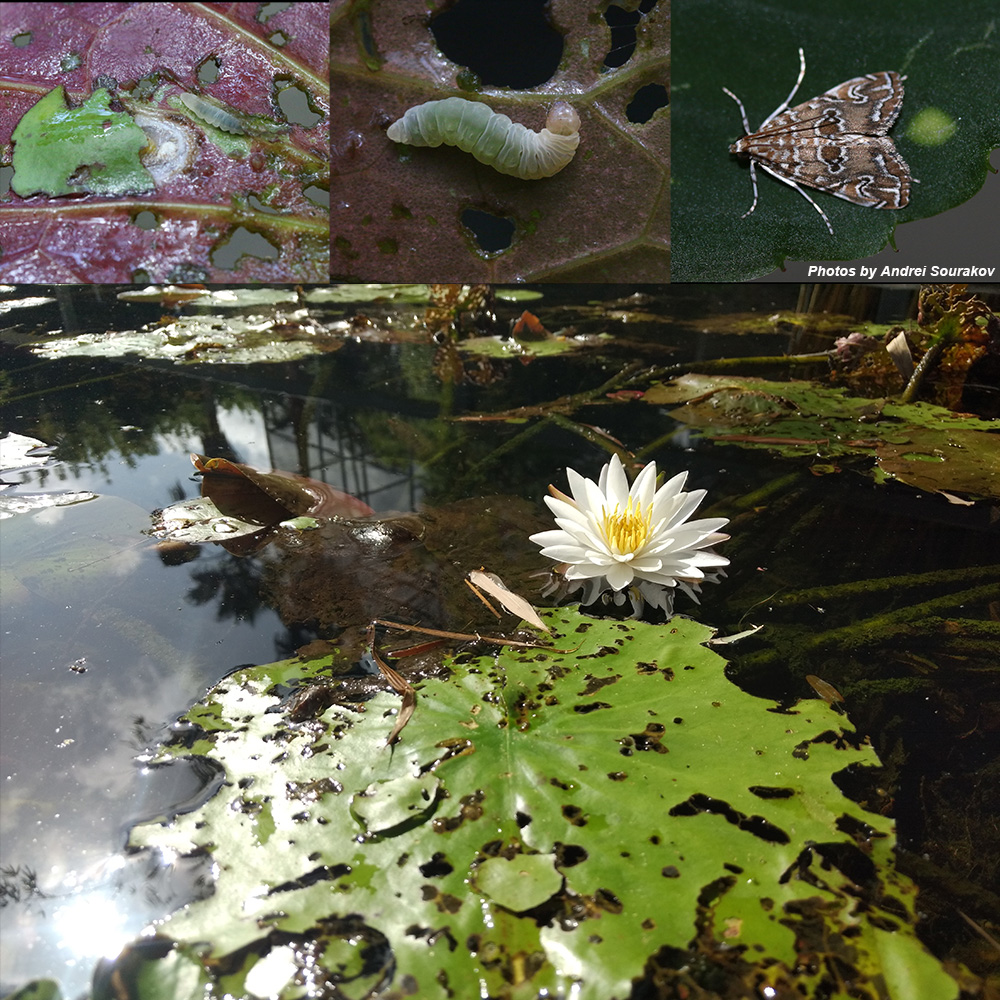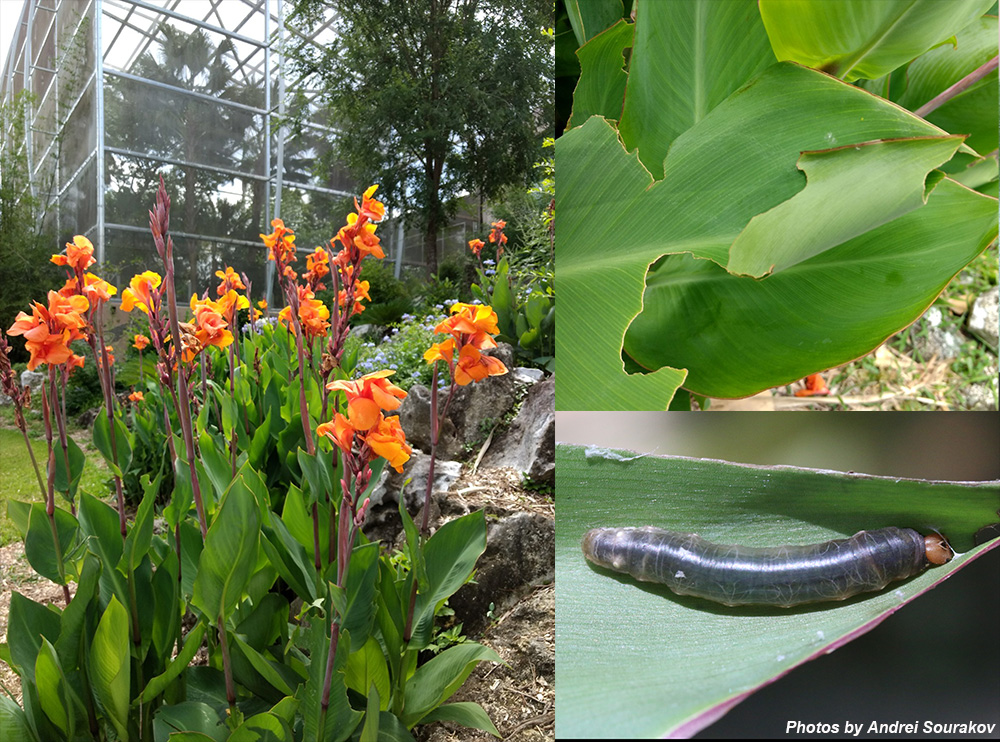Between our McGuire Center for Lepidoptera and the Harn Museum of Arts, we share a plaza with some interesting, I would even say, experimental landscaping. This includes a huge pile of rocks that now has plenty of flowers growing among them so as not to be confused with a rock pile. There are also pools of water surrounded by borders of the perfect-for-tripping-an-upward-gazing-tourists height. With some luck, the felled tourist could land in the waterlilies without hitting their head on the border.
And that brings me to the current topic: lilies are attractive plants and not only for the tourists but also for Lepidoptera larvae. In the last week, I have collected aquatic Lepidoptera larvae of the Waterlily Borer in the abovementioned ponds and the Brazilian Skipper larvae on Canna Lilies planted to distinguish the abovementioned rocks. These larvae I cannot resist sharing with you in the photos below.

